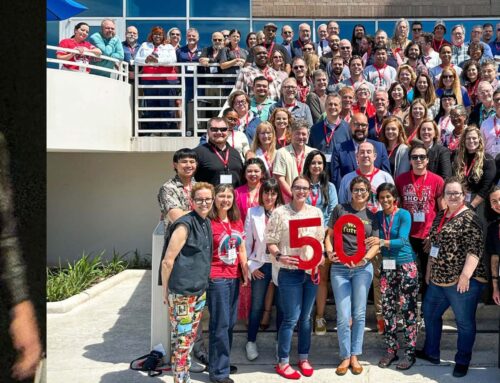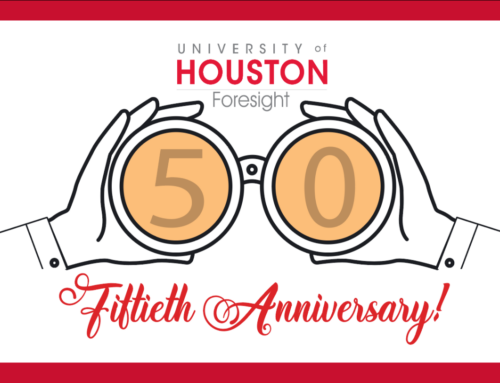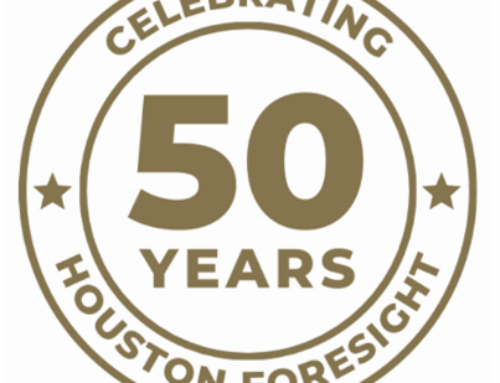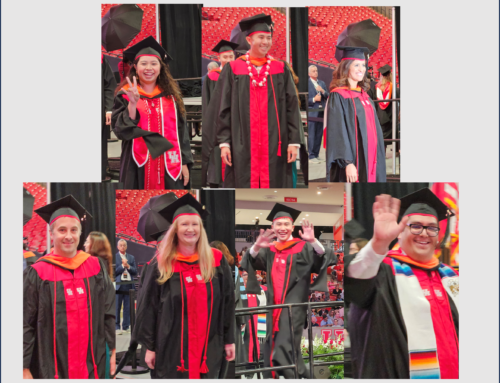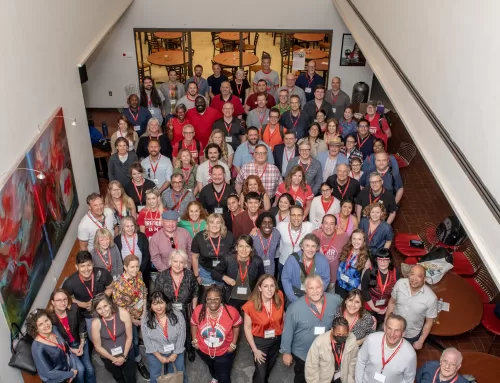 It was hard to stop! A dozen or so Houston Foresight students met in person and virtually to participate in the IRI/IFTF Innovate game. It was tremendously engaging. The new-to-MOOG-playing folks (including myself) were a little nervous about what to do as our appointed hour to start arrived. It really helped having a couple of veterans, Mackenzie Dickson and Karl Irish, who had played a similar type of game last year to reassure us and provide a little strategy. Once we jumped in, it was pretty easy to pick up and soon we were off to the races.
It was hard to stop! A dozen or so Houston Foresight students met in person and virtually to participate in the IRI/IFTF Innovate game. It was tremendously engaging. The new-to-MOOG-playing folks (including myself) were a little nervous about what to do as our appointed hour to start arrived. It really helped having a couple of veterans, Mackenzie Dickson and Karl Irish, who had played a similar type of game last year to reassure us and provide a little strategy. Once we jumped in, it was pretty easy to pick up and soon we were off to the races.
The critical issue being explored by the game was: Today’s paths to research and innovation won’t work in 2038 … how will you remake the future? Two supporting questions were used a prompts for participants to add their ideas:
- How can new research and innovation practices lead the way in 2038?
- What obstacles & roadblocks will hold research & innovation back?
Pretty broad questions, but I suspect the idea was to gather a pretty broad range of thinking, and see where participants took it. The approach uses the “brainwriting” creativity technique, in which participants build off the responses of one another. This creates a challenge or opportunity early in the game, in my view. It would seem that the early responses are extra important, since the game relies on building, but one can start a new thread at any time. When our band arrived we started by devoting a period of time to adding original thoughts, and then we started building off others.
It was fascinating to watch those in the room totally absorbed in adding ideas – it was hard to tear myself away to observe, because I was busy adding ideas. And I know our remote participants were busy too, as our three highest scorers were remote students. A remote student was our guide and the conversations we had during the game were among everyone – not just the f2f people. The room got quiet as we focused on adding our ideas – and I suspect keeping an eye on the scoreboard, as the contribution of ideas and “builds” were awarded points, and I suspect the competitive juices were flowing.
It was interesting to me that our group was able to figure out the identity of some other participants from their username and the type of ideas they submitted. While we worked pretty hard, there was plenty of discussion and joking. I think we’d all agree it was a great deal of fun. And it was much more fun to do it as a group!
We “called it” after about two-and-a-half hours, and reflected on the experience. If I could mix in some of my own and participant reflections:
I thought the scenarios would be tied more closely or more clearly into the game and that we would be responding to the scenarios. There was a short video that captured key themes of the scenarios, but I suspect that some skipped it thinking it was instructions on how to play the game. It wasn’t linked in an obvious way, and didn’t seem to matter in terms of the volume of generating ideas. We crafted a very simplistic domain map of R&D before we started contributed to provide some, albeit a primitive scaffolding upon which to generate ideas.
I was surprised by how much “R&D” was a kind of black box to some. And it came up in the game that there is a general lack of awareness about how R&D operates in general. A nice opportunity is to raise awareness of that earlier in student’s education.
The participants agreed that the game was absorbing and entertaining, and that it produced a huge volume of ideas. There was some skepticism on whether it produced anything new. My experience is that generation is by nature inefficient and that even a low percentage of new is still a gain. During the game, I saw or came up with a handful of ideas new to me, and if I can do that in just a couple of hours, I say “success!” It could be that a little more direction up front from the guides in terms of building off the scenarios would have increased the hit rate of new ideas, but nonetheless I think new ideas were indeed generated.We speculated on some ways to improve. It was noted that the game encouraged speed, volume, and brevity – similar to tweeting. The ideas produced were thus pretty raw. We thought a second round of the game might be restructured and incentivized to encourage more thought-out and reflective ideas. It could be that game guides sifted out top ideas from the first round as stimulus for a second round, and that more than 140 characters were allowed and more attention would be given to evaluating quality when scoring a second round – of course, this would involve much more participation from the host end – but here we thought one mechanism might be to take, say, the top 50 scorers of the first round, and have them be evaluators in the second round. A second round might also have more focused questions.
So, I’d say we had great fun, learned something, and see potential for MOOGs being an even more useful platform in the future. We are very grateful to the organizers for crafting a memorable experience for us. We’re looking forward to the next game! Andy Hines

